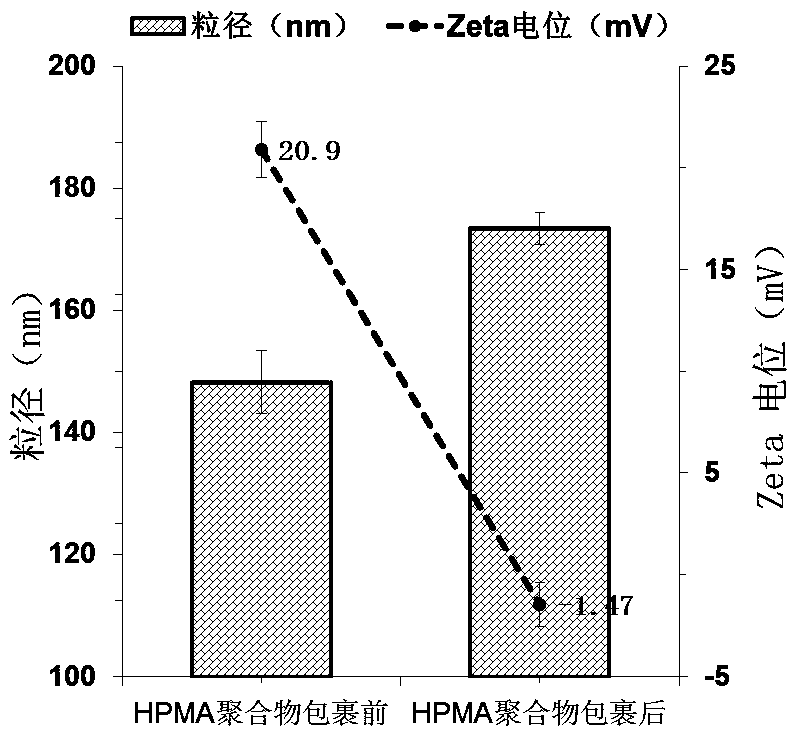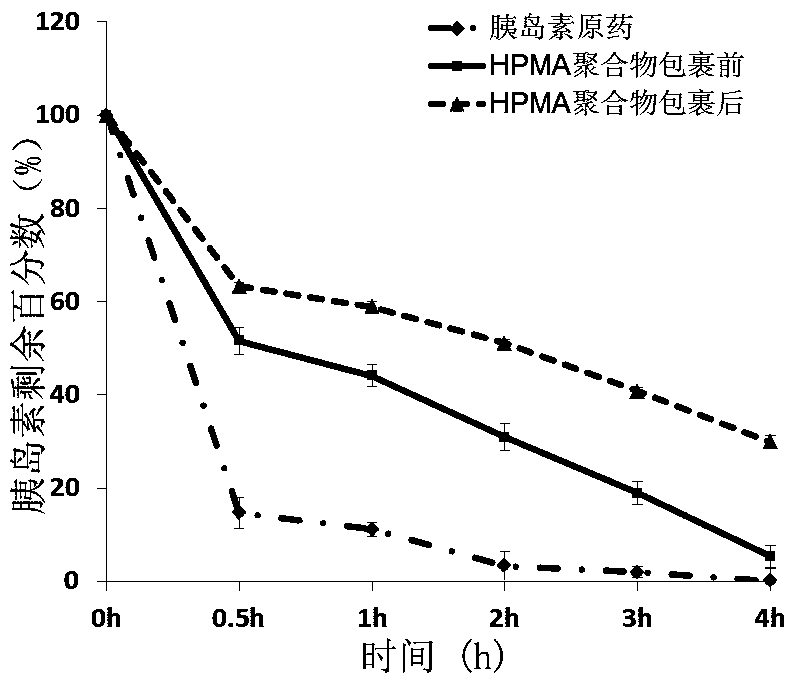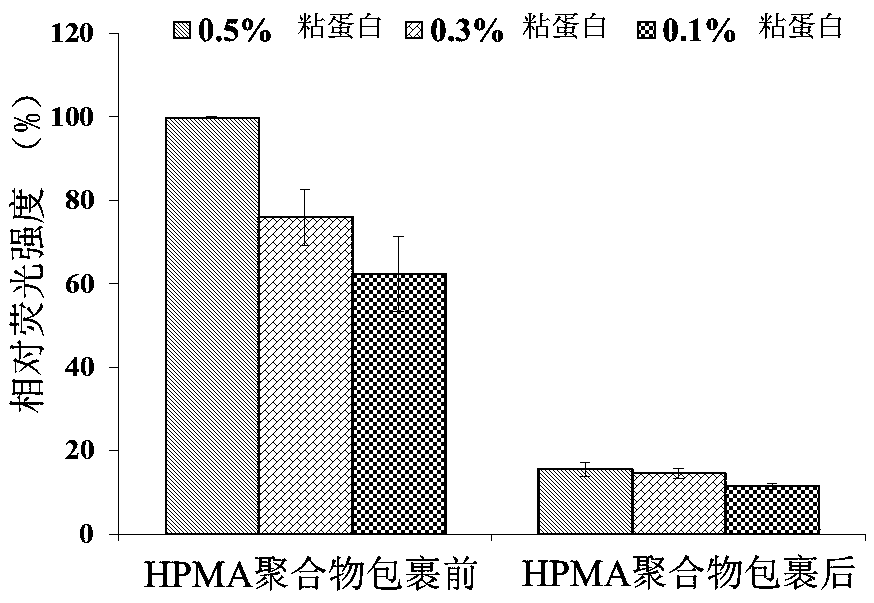A kind of nanoparticle based on n-(2-hydroxypropyl) methacrylamide polymer and preparation method thereof
A technology of methacrylamide and polymer, applied in the field of N-methacrylamide (HPMA) polymer and its derivatives, nanoparticles passing through the mucus barrier and its preparation
- Summary
- Abstract
- Description
- Claims
- Application Information
AI Technical Summary
Method used
Image
Examples
Embodiment 1
[0057] Example 1 Synthesis of HPMA polymer modified by glycylglycine (negative charge)
[0058] Mix 30mL of freshly steamed methacryloyl chloride with 15mL of dichloromethane, slowly drop into 77mL of dichloromethane solution containing 21mL of 1-amino-2-propanol and 32g of sodium carbonate, and rise to room temperature after the addition is complete. Stir for 1h. Then the reaction solution was placed in a low-temperature cold bath at -50°C for 1 h, and a white precipitate was generated. After filtration, the precipitate was recrystallized with acetone, and the white crystal was HPMA monomer.
[0059] Mix 8.71mL of methacryloyl chloride with 30mL of dichloromethane, slowly drop into the sodium hydroxide solution containing 9.79g of glycylglycine under stirring at -15°C, and at the same time drop into 1M sodium hydroxide solution to adjust the pH to 9- 10. Stir at room temperature for 1.5 h. The dichloromethane layer was separated and washed with 20 mL of water, the aqueou...
Embodiment 2
[0061] Example 2 Synthesis of 3-(aminopropyl) methacrylamide salt (positive charge) modified HPMA polymer
[0062]With 2,2'-azobisisobutyronitrile (AIBN) as the initiator, methanol as the solvent, polymer monomers HPMA, 3-(aminopropyl) methacrylamide salt (APMA) (HPMA: APMA = 80 :20 mol%) to generate HPMA polymer precursor by radical polymerization solution reaction (polymer monomer: initiator: solvent = 12.5:2:85.5 wt%).
[0063] AIBN, HPMA and APMA were weighed into ampoules according to the above proportions, dissolved in an appropriate amount of methanol, sealed with nitrogen gas, and stirred at 50°C for 24 hours. Precipitate and purify in ether, remove the remaining solvent and ether-soluble precipitate, dissolve the product with deionized water, dialyze, and freeze-dry to obtain 3-(aminopropyl)methacrylamide salt-modified HPMA polymer.
Embodiment 3
[0064] Example 3 Synthesis of dodecylamine (hydrophobic) modified HPMA polymer
[0065] Take 8g of the crystallized MA-GG-OH monomer in Example 1 and dissolve it in 80mL of dimethylformamide (DMF), then add 6.11g of p-nitrophenol (ONp for short) and 9.07g of N,N-dicyclohexyl Carbodiamine, stirred at -10°C for 3 hours, raised to room temperature and stirred for 8 hours, and filtered to remove the precipitate. Remove DMF under reduced pressure at 50°C, add ethyl acetate, recover the solvent, wash the obtained solid with ether, recrystallize with a mixture of ethanol:water (2:1), and place it at 4°C to obtain white crystals that are MA-GG-ONp single body.
[0066] With 2,2'-azobisisobutyronitrile (AIBN) as the initiator and acetone as the solvent, the polymer monomers HPMA, MA-GG-ONp (HPMA: MA-GG-ONp= 80:20 mol%) passed The free radical polymerization precipitation reaction generates the HPMA polymer precursor (polymer monomer: initiator: solvent = 12.5:2:85.5 wt%). AIBN, HP...
PUM
| Property | Measurement | Unit |
|---|---|---|
| particle size | aaaaa | aaaaa |
Abstract
Description
Claims
Application Information
 Login to View More
Login to View More - R&D
- Intellectual Property
- Life Sciences
- Materials
- Tech Scout
- Unparalleled Data Quality
- Higher Quality Content
- 60% Fewer Hallucinations
Browse by: Latest US Patents, China's latest patents, Technical Efficacy Thesaurus, Application Domain, Technology Topic, Popular Technical Reports.
© 2025 PatSnap. All rights reserved.Legal|Privacy policy|Modern Slavery Act Transparency Statement|Sitemap|About US| Contact US: help@patsnap.com



